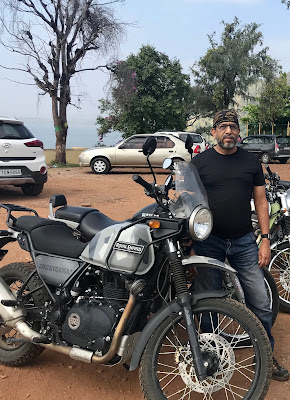Teaching / Learning Kannada to those who say “Kannad Gottilla”
The Linguistic Circus
India is a land of linguistic diversity, officially recognizing 22 languages under the Eighth Schedule of the Constitution. These include Assamese, Bengali, Bodo, Dogri, Gujarati, Hindi, Kannada, Kashmiri, Konkani, Marathi, Malayalam, Maithili, Manipuri, Nepali, Odia, Punjabi, Santali, Sanskrit, Sindhi, Tamizh, Telugu, and Urdu.
Despite popular belief, Hindi is not the national language of India. The Constitution does not grant any language that status. However, Hindi and English serve as the official languages of the central government. While Hindi is widely spoken, India’s linguistic identity remains deeply regional.
States and their Linguistic identities
India’s states were reorganized in 1956 based largely on linguistic and administrative convenience. The States Reorganisation Commission (SRC), led by Fazl Ali, along with H.N. Kunzru and K.M. Panikkar, played a crucial role in this restructuring.
Why was Reorganization necessary?
1. Linguistic Identity: States were formed to ensure people speaking the same language could live within a single administrative unit.
2. Administrative Efficiency: It was easier to govern states where a common language was spoken.
3. Cultural and Regional Identity: Some reorganization also considered historical and cultural factors.
What About Hindi-Speaking States?
Unlike other linguistic regions, Hindi-speaking areas were not grouped into one state. Instead, they were divided for administrative and historical reasons. This led to the formation of multiple states:
• Madhya Pradesh – Included both Hindi-speaking and tribal regions.
• Bihar – Historically distinct despite being Hindi-speaking.
• Rajasthan – Formed from princely states.
• Haryana – Separated from Punjab in 1966 due to cultural and administrative differences.
• Himachal Pradesh – Given separate status due to geographical and administrative factors.
• Chhattisgarh, Uttarakhand, and Jharkhand – Created in 2000 for better governance and regional identity.
While states like Tamil Nadu, Kerala, and Gujarat were linguistically unified, the vast Hindi belt was split into multiple states. People in border areas, like skilled trapeze artists, often juggle multiple languages in their daily lives.
Karnataka, Bengaluru, and Kannada
Now, let’s focus on Kannada and Karnataka.
Since the early 2000s, Bengaluru has seen a massive influx of people from other states, thanks to the IT boom. The then Chief Minister S.M. Krishna played a significant role in positioning Bengaluru as India’s IT capital.
While we Kannadigas take pride in our city’s cosmopolitan nature, there’s a subtle frustration when non-Kannadigas refuse to learn Kannada and instead expect locals to adjust to their language—be it Hindi, Tamil, Telugu, or others.
This raises a key question: Is “Kannad gottilla” a badge of honor or a matter of shame—especially for those who have lived here for years?
The “Swalpa Adjust Maadi” Mindset
Kannadigas are often labeled as “too adjusting.” The phrase “Swalpa adjust maaDikoLLi” (please adjust a little) defines our accommodating nature. But does this make us more welcoming, or does it allow others to take our linguistic identity for granted?
One thing that irks me is when people say “Kannad” instead of “Kannada.” Why drop the last vowel? Do we say “Hind” for Hindi, “Marath” for Marathi, or “MalayaL” for Malayalam? Then why shorten Kannada?
Whenever I ask people why they don’t speak Kannada, the common response is: “We don’t have an easy way to learn.”
Well, here’s a simple, time-tested method to teach Kannada to non-Kannadigas. It worked for my wife, and it can work for anyone!
A Simple Way to Learn Kannada
I call this “Bengaluru Kannada”—a fun, practical way to start speaking Kannada without worrying about grammar rules.
Step 1: Create a Cheat Sheet
1. List commonly used verbs (Kriya padas) in your language (preferably in an alphabetical order) and their Kannada equivalents.
• Come – baa / banni
• Do – maaDu / maadi
Go – hogu / hogi
• How much – yeshTu
• To happen – aagi
2. List commonly used adjectives (again in an alphabetical order) and their Kannada meanings.
• Fast – bega
• Slow – nidhaana (be careful—if you mispronounce it with a short “a”, it means death!)
• More – jaasti
• Little / Less – swalpa / kammi
(Fun tip: You can often use English adjectives as they are—e.g., slow, fast, speed, quick—and still be understood!)
Step 2: The Easy Trick for Nouns
Take any English noun and add a “U” sound at the end. It works 90% of the time!
• Pen → pennu
• Car → caru
• Cycle → cycle-u
• Road → roadu
Bike → Bikeu
Brake → Brakeu
(Exceptions exist, but don’t overthink them! Mostly nouns ending with the vowels A, O, U and some like V cannot be attached with this U example, Auto, Radio, Tabala, TV remains as it is).
Step 3: Start Forming Short Sentences
Now, mix verbs, adjectives, and nouns to start speaking basic Kannada!
Examples:
1. Pennu kodi. (Give me the pen.)
2. Swalpa pennu kodi. (Give me the pen, but a little politely!)
3. Swalpa bega pennu kodi. (Give me the pen quickly!)
4. Auto fare-u jaasti. (The auto fare is too much.)
5. Auto fare-u swalpa jaasti. (The auto fare is slightly high.)
6. Auto fare-u swalpa jaasti, kammi maadi. (The fare is high—please reduce it a little.)
7. Auto Swalpa slow hogi (Drive the auto slowly please)
Congratulations! You Can Now Speak Kannada!
With this simple approach, you’ll quickly earn the appreciation of local Kannadigas. A smile, a nod, and a friendly “swalpa swalpa Kannada gottu, try maaDtheeni” can go a long way!
So, go ahead—start speaking Kannada today.
Bhale, Siri kannaDam gelge (Victory to the rich Kannada)











Very timely initiative. Must read for all those who live in Kannad state. Learn to respect and try to understand we are different and not against each other!
ReplyDeleteHa ha, you mean kannadA state! Yes. we welcome people in and also welcome them to speak our lingo.
Delete“Need an easy way to learn” is the 4th barrier.
ReplyDeleteBefore that
The 1st barrier is “I am the great Hindian, We don’t learn languages, we have a superior status in this country”
The 2nd barrier is “Why? I am able to manage without”
The 3rd is “not all are good with language skills “ or “It is not easy for adults to learn new languages”
Most don’t remove those 3 mental barriers and they succeed in hiding behind these 3 barriers and quote the 4th to appear well meaning.
So, they encourage their children to also not learn Kannada.
Unfortunately true and you have hit the nail on the head Siri.
ReplyDeleteKannadave nammamma.
ReplyDeleteKanishta kannadakke gaurava koduva manasti yaadaroo irabeku hora rajya dinda bandu karnataka dalli jeevana maadovrige
👍🏾
DeleteHi Mohan, Bang on. Whenever I am in BGL I try to use the KannadA I learnt when I was there between 1992-98. The funny part is my KannadA is exactly the same as what you explained. 😄
ReplyDeleteBut, I dare not use it with you.
SPM
Ha ha. I’m sure that your Kannada will be more refined than this stop gap idea.
DeleteDear sir,
ReplyDeleteWe started saying, we are truly cosmopolitan city.
We welcomed everyone.
Today we are a sort of foreigners!
The feel is better OT dies and lives us free.
I don't know
What is in store.
But we all have given up a lot.
It is a rich man's slum.
Every road is blocked by cars. The owners park on the road end to end.
No place for any one.
No roads for vehicles.
This is slum.
We have lost language, free space to walk , fresh air, good climate and everything.
I hope some good days will return
True, it's easy to pick up basics of any new language. But no very few put in the effort unless it is necessary to survive. Example: Very few non-Marathis born and brought up in Mumbai speak any Marathi.
ReplyDeleteAs long as KA govt & Bengaluru corporation remain bilingual (Kannada & English), no immigrants to Bengaluru will feel the need to learn Kannada.
Yes, true. Necessity is the key. That necessity should be created by the locals. Our Swalpa adjust maadkotheevi (we will adjust) is perhaps the crux of the problem. Mumbai example is apt.
DeleteThanks Mohan for the initiative. As kannadigas when we go out we are the “ adjusting” type as well. I learnt good Tamil when I started living in Chennai and started using the languages in my sales call as a fresh engineer which got appreciation with some laughs in-spite of my poor grammar . All it takes is your attitude and mindset of integration with locals.
Delete